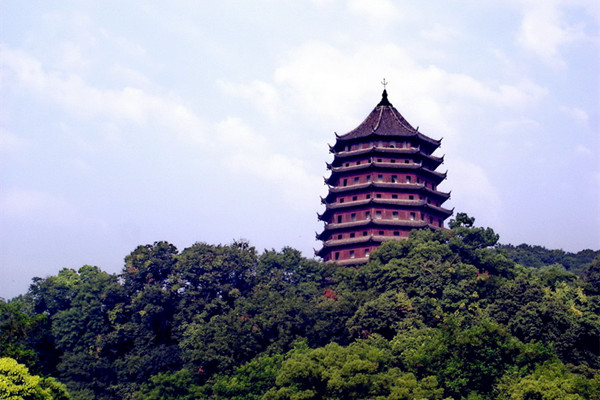Six Harmonies Pagoda, highly erected by the Qiantang River and to the south of the West Lake, is a perfect symbol of brick-and-wood structure built in the ancient China. It is first built in 970 AD in the Northern Song dynasty (960-1127), in a way to press down the evil of the river tidal bore in Qiantang River. The name of the pagoda is related to six codes of Buddhism. Six harmonies mean the harmonies of body, mind speech, opinion, wealth and abstinence from temptation. When you climb to the first floor, you will attain the harmony of body; the second floor, the harmony of mind; and so on.
Another explanation goes that the ”six harmonies” comes from the six buddhist ordinances, meaning ”haarmonies of the heaven, earth, east, west, south and north”. The pagaoda has fallen into ruins and gone through reconstruction many times. The original pagoda is nine storied with the tip, serving as a navigation tower in the river. The present tower was the restoration in 1156.
Seen from outside, the tower, with a height of 59.89 meters, have 13 stories while in fact only seven stories in side. The core of the present pagoda was built with the bricks left over from the southern Song Dynasty. The upturned wooden multieaves and wrapping structure were first built in the ending years of the Qing Dynasty and have been refurbished many times. Commanding a spectular view of surging Qiantang River, the pagoda presents a quiet image of age-old majesty. Looking out from the top of the pagoda, sightsers can see as far as the misty horizon, enjoying an unforgettable, breathtaking experience.
The Six Harmonies Pagoda has been under the state protection since 1961 as a state-level cultural site.
